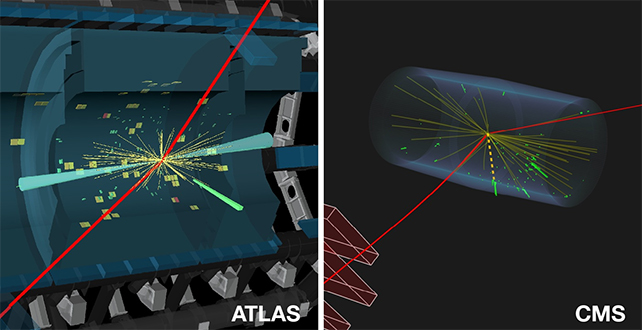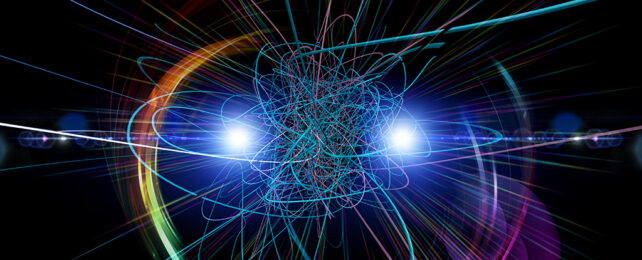A refined hunt for the extremely rare transformation of the Higgs boson has delivered results, providing the first evidence of a process that could hint at unknown particles.
Reconciling the results of several years' worth of proton crashes inside two different detectors at the European Organization for Nuclear Research's (CERN) Large Hadron Collider (LHC), physicists bumped up the statistical precision of the rate at which the famous 'mass-giving' particle decayed into a photon and a Z boson.
The results, shared at the LHC Physics Conference in Belgrade last week, fall well short of what might be considered significant. But the process itself can be improved to hone in on the bubble and hiss of quantum recipes, and help determine where exotic new forces and building blocks might exist.
The Higgs particle became the darling of the physics world in 2012 when evidence of its existence was confirmed by the ATLAS (or 'A Toroidal LHC Apparatus') and CMS (Compact Muon Solenoid) detectors at CERN.
Not only was it the final entry in that grand map of particles – the Standard Model – to be experimentally confirmed; its observation promised to be a window into hidden parts of the quantum realm.

For the most part, knowing that the Higgs particle and its associated field exist means we now understand why fundamental particles have mass.
Since energy and mass are different ways of describing the same kind of thing, the effort it takes to hold big, chunky objects together (like atoms, molecules, and elephants) contributes a significant proportion of the object's mass.
On a smaller scale, the effort it takes for more fundamental objects like electrons or quarks to wade through the Higgs field explains why they have a resting mass, and why particles like photons don't.
Yet the gregarious nature of the field and the effervescent froth of its bosons makes it a perfect candidate to look for signs of hypothetical quantum fields and related particles that wouldn't normally make themselves known through more obvious means.
"Each particle has a special relationship with the Higgs boson, making the search for rare Higgs decays a high priority," says the physics coordinator for CERN's ATLAS experiment, Pamela Ferrari.
The decay of a particle is like the death of a pigeon amid the skyscrapers – it happens all the time, often in a variety of ways, but you'd be lucky to catch more than a few drifting feathers as evidence of their passing.
Fortunately, by keeping count of all of those 'feathers' in the dust-up of a collider, physicists can build a picture of the different ways particles fall apart and fleetingly reemerge into new things.
Some of these decays are relatively common, but for the Higgs particle, transformations into a photon and the short-range weak nuclear force-carrying Z boson is a roughly one-in-a-thousand event. Or, as predicted in the textbooks, around 0.15 percent of all the Higgs' decays.
But that's just what the Standard Model dictates we should expect. As amazingly insightful as that grand theory is, we know it has to fail at some point, given it doesn't have much to say about space-stretching dark energy or the warping of space and time in a gravity-like manner.
Any divergences from this figure could be used to support alternative models that just might leave enough room to fit troublesome facts.
Knowing how to go about improving the best model of physics we've ever had means finding a bunch of anomalies it currently can't explain. Like exotic fields and particles that conduct subtle and rare actions we wouldn't normally notice.
"The existence of new particles could have very significant effects on rare Higgs decay modes," says Florencia Canelli, physics coordinator of CERN's other detector, the CMS.
For now, those elusive unicorn particles are as mythical as ever. The results so far fall roughly within range of what the Standard Model predicts.
Nonetheless, there is only enough data to make physicists moderately confident that the results are correct. Bigger runs, perhaps using better technology, could yet reveal small differences hiding a big window into a whole new set of theories.
"This study is a powerful test of the Standard Model," says Canelli.
"With the ongoing third run of the LHC and the future High-Luminosity LHC, we will be able to improve the precision of this test and probe ever rarer Higgs decays."
